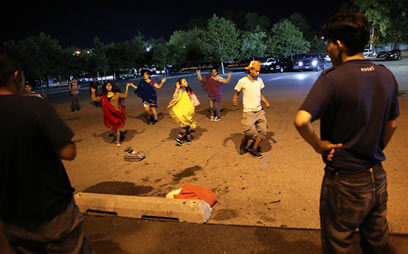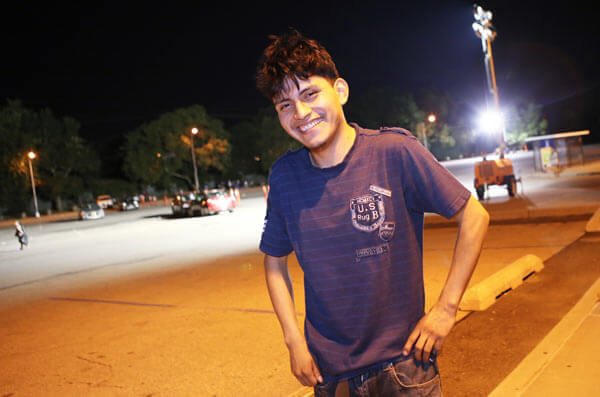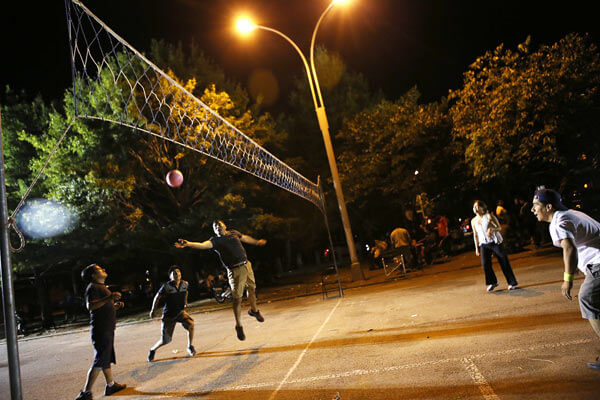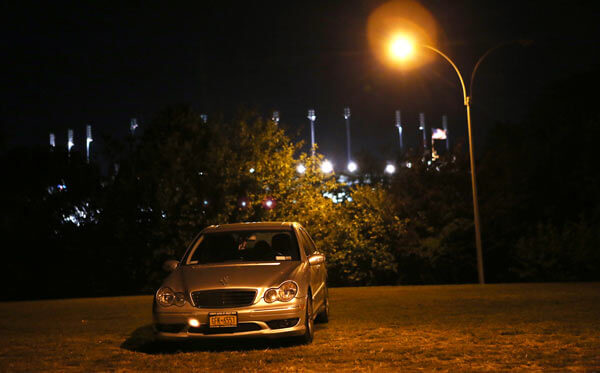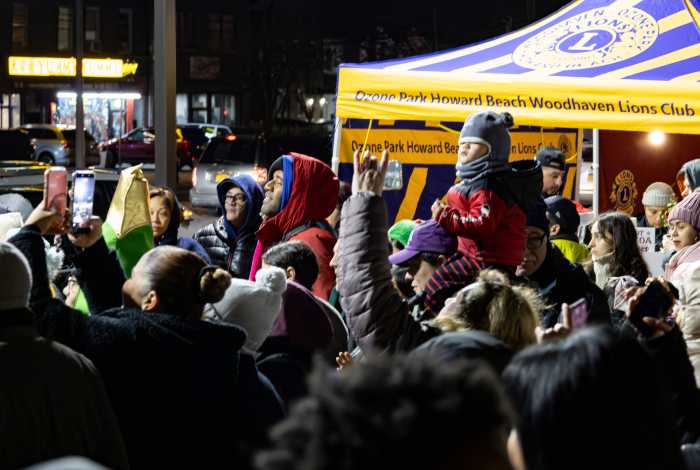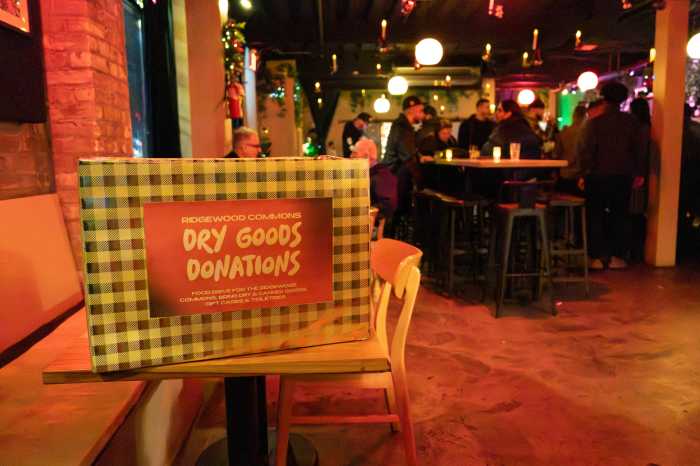By Christina Santucci
The H parking lot came alive when the sun went down.
As a team from a Jehovah’s Witnesses congregation played four-on-three volleyball, Ecuadorian folk dancers practiced their moves Sunday and groups of people congregated around barbecues set up on the grass around the Hall of Science’s paved area used for parking during the US Open.
Half a mile away, the world’s greatest tennis players competed for millions in prize money and the title of US Open champion, but few in Lot H seemed to notice.
During most of the summer, the parking lot on 111th Street, in the shadow of the Hall of Science’s Rocket Park, is used in the evening as families heading into the park for picnics and to play soccer park there.
But for two weeks during the US Open, the space is designated for drivers with H permits as well as handicapped parking.
As a result, volleyball games were played on makeshift nets set up alongside luxury SUVs, and dancers had to watch out for shuttle vans, which transport visitors into and out of the premier tennis tournament.
“The park is for everybody. We just come here for exercise,” said Claudio Lliguicota, who started the Ecuadorian group Kay Pachak two years ago. “We are here to practice. They have the right to park to watch the tennis matches.”
His team of about 14 to 16 people, who range in age from Lliguicota’s 9-year-old niece to a dancer in her 30s, meets Mondays, Wednesday and Fridays.
On Sunday, they used a corner of the lot underneath a street lamp to fine-tune their moves in preparation for a competition Sept. 21.
“Today is extra because we try to be the best,” said 17-year-old participant Ana Mizhquiri.
Lliguicota was born in the United States and spent six years in Ecuador. While in the Latin American nation, he fell in love with the culture, food and traditional dances.
There are some added benefits to the team: Lliguicota met his girlfriend of one year through the group.
“I found her and I am really happy,” he said.
For practice, many members sport T-shirts, shorts and sneakers, with a few of the women wrapping themselves in colorful shawls. For competitions and presentations, however, the group dresses in elaborate outfits.
Lliguicota said Kay Pachak only went to two competitions last year because they do not have transportation and some participants have joined but later dropped out.
As the weather gets colder, the group’s sessions must migrate from the outdoor parking lot to an indoor space, yet to be determined.
“We try to find a way to practice,” he said.

